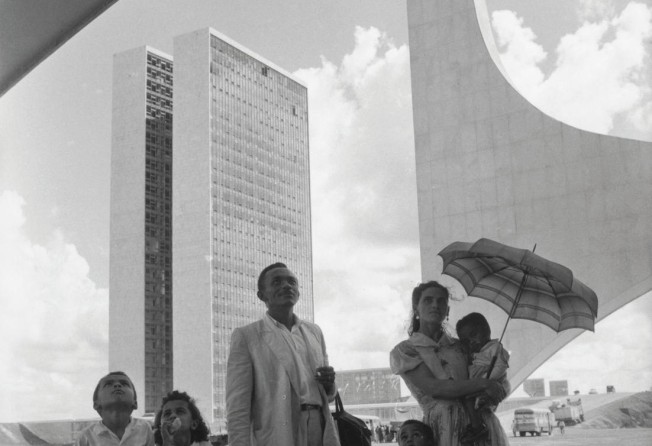Review: René Burri - Utopia

René Burri - Utopia
University of Hong Kong Museum and Art Gallery
The optimistic post-war era of renewal is well captured in "Utopia", a collection of Swiss photographer René Burri's architecturally themed images.
The 80-year-old Burri is a master of capturing the subtlety of architectural form and the nonchalant order of objects using the fundamental tools of photography - light and shadow. Especially known are his 1960s portrait series of the Cuban revolutionary Che Guevara and a continuing series about leading architects.
This exhibition is an exploration into the architectural theme. In 1960, Burri followed Le Corbusier as the elderly architect met his clients, the Dominican monks of the Convent of La Tourette at Eveux-sur-Arbresle, near Lyon. Le Corbusier was charged with designing a new building containing 100 individual residential cells, a rooftop cloister, chapel and library for this silent order, and Burri photographed him discussing his plans.
Le Corbusier's modernist secular pragmatism met a normally insular religious order. Burri captures this tense counterpoint and its conclusion: the newly completed reinforced concrete building sitting on an open hillside location.
In the same year, Burri travelled to document the construction and inauguration of Brasilia, the newly built capital of Brazil. Designed by urban planner Lúcio Costa, landscape architect Roberto Burle Marx, it also features the brilliance of architect Oscar Niemeyer's individual buildings.
Burri offers a portrait of a working Niemeyer as he oversees technical drawings and construction in this modernist utopia. The studied concentration of Niemeyer contrasts with the apparent ease of constructing an entirely new city.
Burri photographs small architectural details and grander bird's-eye vistas of Brasilia's new expanse of government ministries and roadways. A finished project rarely conveys adequately the unseen creation and complexity of the work involved. However, Burri captures this architectural achievement through the eyes of visitors to the new capital, particularly in A Worker showing his Family the Capital on Inauguration Day (below).
Burri's photographs mirror Hong Kong's own post-war urban development. The influx of people into Hong Kong in 1945 and the conclusion of China's civil war in 1948 saw great strains on the city's existing infrastructure. While Brasilia was being built, Hong Kong also adopted a pragmatic and modernist approach to architecture to construct, among others, the former Central Government Offices, City Hall, the now-demolished Star Ferry building and the world's largest public housing programme.
The exhibition is inspiring, but unfortunately fails to explain the historical context of the period or of Hong Kong's place in post-war modernist architecture.
John Batten Until August 25